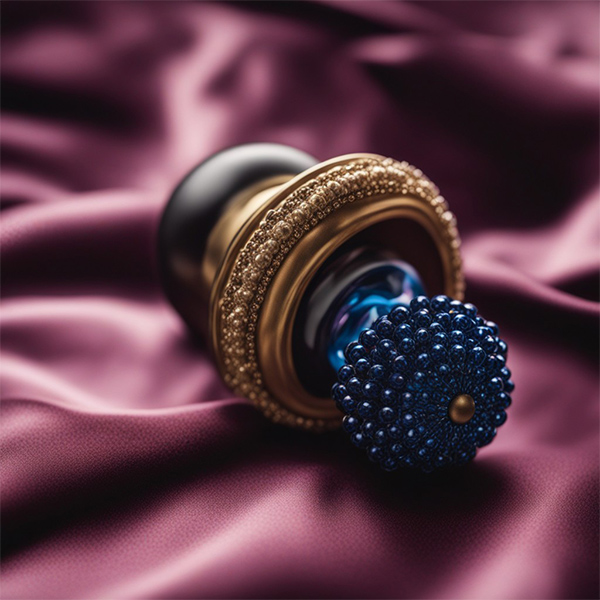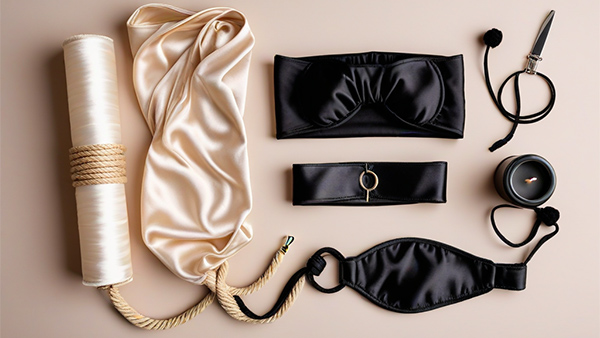Fetish & BDSM Basics
Beginner’s Guide to BDSM Restraints – How to Explore Safely, Comfortably, and Confidently
Have you ever been a little curious about BDSM — but also a bit nervous? You’re not alone. Lots of people are intrigued by the idea of being tied up, lightly restrained, or playing with power dynamics.
But for many beginners, it can feel intimidating to even ask: What are BDSM restraints? How do they work? Is it safe? Will it hurt?
Don’t worry. That’s what this guide is for.
We’ll talk about what BDSM restraints really are, why people love them, the different types you can try (even if you’re brand new), how to use them safely, and how to talk to your partner about it — all in clear, approachable language.
No shame. No judgment. Just a friendly, honest conversation about exploring something new.
So grab a tea (or something stronger if you’d like!) and let’s dive in.
What Even Is BDSM?
BDSM stands for Bondage and Discipline, Dominance and Submission, Sadism and Masochism.
That sounds like a mouthful — and maybe a little intense. But it really just describes a big umbrella of activities where people consensually explore things like power exchange, role play, restraint, sensation, and yes, sometimes pain (but only if everyone wants that).
BDSM isn’t about being “forced” or “out of control” — it’s actually the opposite. It’s about trust, communication, and consent. It’s about partners saying, “I want to try this with you. I want you to hold my wrists. I want to see how that feels. Let’s do this together, safely.”
In fact, the BDSM community is famous for being obsessed with talking things through, setting limits, and making sure everyone is on the same page.
That’s a good thing. It means even beginners can experiment in a way that feels safe, sexy, and exciting.
A (Very) Short Story of BDSM & Restraints
Believe it or not, BDSM play isn’t new.
Humans have been exploring power play, restraint, and sensation for centuries. Historical art and writing from many cultures describe erotic games that involved tying, blindfolding, or spanking.
In Victorian England, there were underground “flagellation clubs” (seriously). In Japan, Shibari — the art of decorative rope bondage — evolved from martial restraint techniques into an intimate, sensual practice.
Fast forward to the modern day, and BDSM is everywhere from 50 Shades to TikTok. But while the aesthetics get the headlines, the real heart of BDSM is communication, creativity, and consent.
Today’s restraints aren’t rusty chains in a dungeon. They’re soft, padded cuffs, silky scarves, elegant rope kits — all designed for comfort, style, and beginner-friendly exploration.
Why Do People Use Restraints?
Let’s get real: why even bother with restraints?
Because they can make sex incredible.
Here’s why people love them:
- Builds anticipation – When you can’t move, every touch feels more intense.
- Enhances trust – Letting someone tie you up (or tying them) can deepen intimacy.
- Creates a power dynamic – Power play can be incredibly sexy, even in gentle forms.
- Focuses attention – You’re not moving around or distracted. You’re in the moment.
- Is versatile – Works for vanilla couples wanting a little spice or those exploring deeper kinks.
At its core, bondage is about surrendering control in a safe, consensual way.
But Isn’t That Dangerous?
That’s the #1 question beginners ask.
It’s a fair one! And here’s the answer:
Restraint play is only dangerous if you don’t know what you’re doing or don’t respect your partner’s boundaries.
But when done correctly? It’s safe, playful, and can be incredibly bonding.
We’ll show you exactly how to do it safely in this guide.
Types of Beginner-Friendly BDSM Restraints
Okay — so you’re intrigued. But maybe you’re picturing heavy chains and spreader bars and thinking “Whoa, too much!”
Good news: beginner restraints are designed to be comfortable, intuitive, and low-pressure.
Here are the most popular options:
1. Soft Cuffs
These are a classic beginner choice for a reason.
Usually padded with faux fur or neoprene
Easy Velcro closures (no knots!)
Gentle on skin
Quick release for safety
Perfect for: couples who want a “held” feeling without discomfort or intimidation.
Tip: Use them on wrists, ankles, or both. Play around!
2. Silk or Satin Ties
Silky ties or scarves bring a romantic vibe.
Flexible, elegant, and non-threatening
Easy to use on wrists, ankles, or as blindfolds
Quick to untie
Can double as props for sensory play (teasing, trailing)
Perfect for: those who want sensuality without feeling “kinky.”
3. Beginner Bondage Rope
Rope? Isn’t that advanced? Not necessarily.
Soft, body-safe cotton or silk rope
Designed for comfortable knots
Lets you get creative with how and where you tie
Beautiful for those curious about aesthetics (think Shibari-lite)
Perfect for: those who want to experiment with artistry and intimacy.
4. Under-the-Bed Restraint Systems
Ready to level up? These kits slide under your mattress.
Adjustable straps attach to cuffs
No permanent installation
Secure but quick-release
Creates immersive, full-body spread positions
Perfect for: adventurous couples wanting an “at-home dungeon” vibe without commitment.
How to Use Restraints Safely (No Shame in Checking This Part!)
If you remember nothing else from this guide, remember this: Safe = Sexy.
Here’s how to keep it safe and fun:
Talk First
Don’t surprise your partner. Have a relaxed chat about fantasies, boundaries, and what you both want to try.
Set Limits & Safewords
Even if you’re being playful. “Yellow” = slow down. “Red” = stop immediately.
Go Slow
First time? Loosely tie. Don’t overtighten. Comfort is key.
Check In Constantly
Ask, “How’s this feel?” Make sure circulation is good. Look for color changes or numbness.
Never Leave a Bound Partner Alone
Obvious but crucial. Stay present and engaged.
Use Body-Safe Materials
Skip belts, duct tape, or zip ties. They can tighten too much and cause injury.
Practice Aftercare
Yes, aftercare. Hug, talk, cuddle, hydrate. Make sure everyone feels safe, connected, and seen.
A Beginner-Friendly Bondage Scenario (For Inspiration!)
Here’s a simple scene you can try tonight:
- Dim the lights.
- Play soft music.
- Use silk ties to bind your partner’s wrists loosely above their head.
- Tease with slow kisses, featherlight touches, or a blindfold.
- Check in: “Does this feel good?”
- Release and cuddle after.
It doesn’t have to be complex. The anticipation, trust, and attention make it hot.
How to Talk to Your Partner About Trying Restraints
This is often the scariest step!
Tips to make it easier:
Choose a neutral time (not in the heat of the moment).
Start with “I’ve been curious about trying something with you…”
Emphasize your trust and desire to explore together.
Share this guide as an opener!
Most partners appreciate honesty — and may be relieved you brought it up first.
Choosing Your First Restraints
When you’re ready to shop, keep this in mind:
- Comfort — Soft lining, adjustable closures
- Ease — No complicated knots required
- Style — Something that excites you
- Safety — Designed for body use, not household shortcuts
At LuvPleasure, we hand-pick Fetish & BDSM Restraints that balance comfort, style, and beginner-friendliness.
Final Thoughts
Trying BDSM restraints for the first time doesn’t mean you’re “kinky” or “extreme.” It just means you’re open to exploring pleasure in new ways — together, with trust.
Restraints can be soft, sensual, fun, and bonding. They’re a way to say: “I trust you. Let’s play.”
If you’re curious, give it a try — at your own pace, with someone you trust, and with a lot of laughter and love.
Ready to explore?
Shop Beginner-Friendly Restraints at LuvPleasure →
FAQs About BDSM Restraints
1. Do restraints mean I’m “kinky” or “weird”?
Not at all. Lots of couples enjoy gentle restraint play. It’s about connection, not labels.
2. Is bondage safe?
Yes — with communication, proper materials, and respect for limits. Never leave a bound partner alone.
3. What if my partner is nervous?
Talk openly. Suggest starting slow with soft cuffs or silk ties. Emphasize trust.
4. Do we need a safeword?
Highly recommended! It’s an easy, clear way to signal comfort levels.
5. Can I use household items?
Be cautious. Belts or zip ties can tighten dangerously. Stick with purpose-made gear.
6. How do we clean restraints?
Most cuffs and ropes are washable. Always check product instructions for details.
7. What is aftercare and why does it matter?
Aftercare is emotional and physical check-in after play. It helps partners reconnect and feel safe.
8. Can bondage help our relationship?
Many couples say yes! It builds trust, encourages communication, and adds playful novelty.












